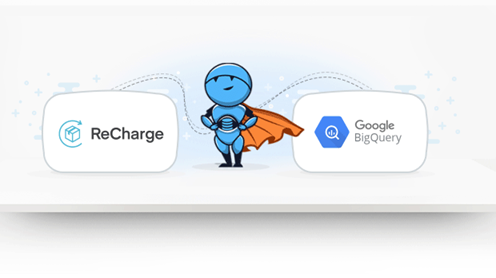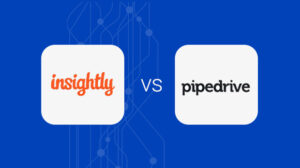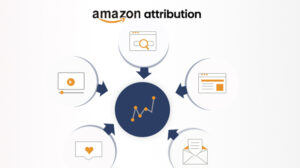If you’re reading this, you are probably looking for a way to transfer data from Recharge payments to Google BigQuery quickly & efficiently. In this article, we will talk about why using Recharge payments is essential and how you can get data from it and all your apps and tools together in one place without having to write any code.
The choice for eCommerce business when it comes to marketing and selling their merchandise is growing every day. eCommerce vendors have to decide on what channels they want to sell on, which channels they want to spend their advertising dollars on, whether the channels include:
- Branded websites
- In some cases branded eCommerce sites per country
- Marketplaces
- In many instances, marketplaces per country
- Retail stores
- To create an omnichannel presence and to engage buyers where the shop
In a competitive digital landscape that we live in, it has become imperative that eCommerce businesses of all sizes that aspire to grow and stay profitable have to look into their data deeply and leverage this for growth. Understanding user behaviour in every stage of the conversion funnel becomes necessary when it comes to increasing profits and retaining customers. Marketing apps, e-commerce platforms, customer support platforms generally provide numerous data which is usually analyzed to understand customer behaviour across those stages of the conversion funnel. Payment gateway data provides insights on customer behaviour in the final stage of the conversion funnel and analysis of this data is of paramount importance as it takes a substantial amount of money and effort to bring a customer to that stage. It is essential to ensure that bounce in this stage is minimal.
With the increase in competition, eCommerce Companies should strive to be more data-driven for various reasons. Some of these reasons include:
- Understanding the balance between demand and supply,
- Understanding & increasing customer lifetime value (LTV)
- Segmenting customer base for effective marketing
- Finding opportunities to reduce wasteful spend
- Optimizing digital assets to maximize revenue for the same marketing spend,
- Improving ROIs on Ad campaigns and
- Offering an engaging and seamless experience for customers in every channel that the customer engages with the brand.
Businesses these days need to be efficient in terms of their data analysis. They are struggling to make sense of the data generated from various applications and tools used to manage different processes efficiently.
Payment gateways & subscription platforms like Recharge payments generate numerous data like payment dropouts, payment methods, fraud attempts, subscriber data. Use this data to get meaningful insights, like when a customer used or searched the EMI option to make a payment, whether the payment got declined due to insufficient funds or security issues. Businesses can block the user to reduce losses in case of fraud. In case of payment decline, the customer might purchase again if remarketed later or given a discounted offer. If a user has canceled a purchase or a subscription, then discount offers or other benefits may be pushed to them based on their reasons for cancellation. Hence, reducing the bounce rate for companies, and thus increasing revenues.
Businesses typically operate at least 10-15 different software/platforms to deliver on their customer expectations. As a result, data silos are created, which makes it more difficult to consolidate data and use the data for reporting, operations, analysis, and taking informed forward-looking decisions. These data need to be analyzed along with data generated from Recharge payments to get a clear picture of the business, which helps in optimizing the business.
Thus the data coming from Recharge payments needs to be fed into marketing tools to provide more personalized ads to customers, or into tools such as customer support platforms, website, inventory management, CRMs. These feeds would help optimize the various processes and give a more personalized experience to customers which would increase conversion rates, thus increasing revenues & reducing losses. Since various tools are creating different data silos in use, it makes generating reports and analyzing these data difficult and time-consuming.
These separate silos make the analysis of the entire business data comprehensively, challenging. Data Savvy eCommerce businesses try to reduce the effort of reporting and analysis by integrating data from all these Data Silos into a cloud data warehouse like Google BigQuery. By taking this step, the process of reporting and analysis becomes easy, inexpensive, and consequently done more frequently.
In this post, we will be looking at methods to replicate data from Recharge payments to Google BigQuery.
Before we start exploring the process involved in data transfer, let us spend some time looking at these individual platforms.
Recharge Payments Overview
Recharge Payments is the leading subscription solution for online businesses. It helps to modify one-time products into subscription options. Recharge payments thus help companies retain more customers and increase CLTV. Recharge Payments automatically renews an order to monitor it from the e-commerce software whenever a customer is charged. The orders also connect to all integrations that deal with fulfillment, accounting, and inventory. Recharge Payments has a robust customer retention feature to help businesses reduce subscription bounce rates. Customers can select their reason for canceling their subscriptions. It also offers a custom incentive to get them to continue their subscription. Recharge Payment’s users love :
- Seamless integration with services like Shopify, Mailchimp
- Customers can manage subscriptions and account settings directly from the website
- Cancellation Prevention by offering subscribers customized discounts and option to defer delivery dates
- Auto-Delivery Option
- Seamless Onboarding process so that users can get up and running in minutes.
Google BigQuery Overview
Google BigQuery is the first genuinely serverless data warehouse-as-a-service offering in the market. There is no infrastructure to manage, no patches to apply, or any upgrades to be made. The role of a database administrator in a Google BigQuery environment is to architect the schema and optimize the partitions for performance and cost. This cloud service automatically scales to fulfill the demands of any query without the need for intervention by a database administrator. Google BigQuery service also introduced an unusual pricing model that is based not on the storage capacity or the computing capacity needed to process your queries. Instead, the pricing relies on the amount of data processed by incoming queries.
The best part about Google BigQuery is that you can load data to the service and start using the data immediately. Users no longer have to worry about what runs under the hood because the implementation details are hidden from them. All you need is a mechanism to load data into Google BigQuery and the ability to write SQL queries. By making data warehousing so simple, Google BigQuery has revolutionized the cloud data warehousing space and has put the power back in the hands of the analysts.
It is good practice to understand the architecture of Google BigQuery. Understanding the architecture helps in controlling costs, optimizing query performance, and optimizing storage. The factors that govern Google BigQuery Pricing are Storage and Query Data Processed. You can read about it in more detail here.
For more information, visit Recharge Connector.
Why Do Businesses Need to Replicate Recharge payments data to Google BigQuery
Let’s take a simple example to illustrate why data consolidation from Recharge payments to Google BigQuery can be helpful for an eCommerce business.
An eCommerce company selling in multiple countries is running campaigns on a variety of marketing platforms across channels. They have different selling platforms, inventories management systems, logistics channels, and target audiences in each country. They use Recharge payments to collect subscription payments from all of their sales platforms in all countries. Now the decision-makers want to increase profits, retain more customers and optimize their Ad campaigns to maximize ROIs; they primarily focus on increasing conversions, and understanding why users are bouncing off at the final stage of the conversion funnel is significant for this. In this process, they face the following problems:
- While calculating profits/losses of the overall business, it becomes a nearly impossible task to pull all of these data from multiple platforms for each country separately, and then analyze all of this data together with the expense data and calculate profits. It involves a lot of working hours which costs money, and there is usually a time lag involved, which reduces the accuracy of the analysis and its effectiveness as the data analysis does not happen in real-time. Since most of the financial transactions related to subscriptions are on Recharge payments. The only solution to this problem is to pull all the data from Recharge payments and other payment gateway solutions to a cloud data warehouse on a real-time basis enabling useful analysis.
- Audience profiling data from e-commerce platforms, CRMs, customer support systems need to be analyzed along with conversion data from Recharge payments optimize audience targeting.
- There are separate data silos for inventory data, logistics data, which need to be separately downloaded and compared and updated regularly to optimize the ad campaigns and ensure that irrelevant ads are not running. For example, an ad might be running off a product which might no longer be in stock, or might not be deliverable in the location in which it is running, rendering these ads as redundant and thus causing a substantial loss for the company. But the most crucial data for understanding Advertisement ROI is the conversion & retention data, which is most accurate in the subscription platform, i.e. Recharge payments.
- For effective remarketing, target the people who have not completed payments or subscriptions or have encountered a failed transaction. Also include people who have added products to their cart, wishlists, favourites or have delayed or canceled their subscriptions. Most of this data is present in Recharge payments. People who have responded to other marketing campaigns like email, SMS, social media marketing also need to be targeted. So again separate data silos from various selling platforms, payment gateways, marketing tools need to be downloaded, analyzed, and compared.
- The compilation and processing of data from multiple sources for thorough research is a considerable challenge if carried out manually.
For these reasons, top companies consolidate all of their data from Recharge payments and other apps and tools into a data warehouse like Google BigQuery to analyze the data and generate reports at a rapid pace.
Replicate data from Recharge Payments to Google BigQuery
There are two board ways to pull data from any source to any destination. The decision is always a build vs buy decision. Let us look at both these options to see which option provides the business with a scalable, reliable, and cost-effective solution for reporting and analysis of Recharge Payments data. You can also retrieve the data from Google BigQuery any time you want.
Use a Cloud Data Pipeline
Building support for APIs is not only tedious but it is also extremely time-consuming, difficult, and expensive. Engaging analysts or developers in writing support for these APIs takes away their time from more revenue-generating endeavours. Leveraging an eCommerce data pipeline like Daton significantly simplifies and accelerates the time it takes to build automated reporting. Daton supports automated extraction and loading of Recharge Payments data into cloud data warehouses like Google BigQuery, Snowflake, Amazon Redshift, and Oracle Autonomous DB.
Configuring data replication on Daton on only takes a minute and a few clicks. Analysts do not have to write any code or manage any infrastructure but yet can still get access to their Recharge Payments data in a few hours. Any new data is generated is automatically replicated to the data warehouse without any manual intervention.
Daton supports replication from Recharge Payments to a cloud data warehouse of your choice, including Google BigQuery. Daton’s simple and easy to use interface allows analysts and developers to use UI elements to configure data replication from Recharge Payments data into Google BigQuery. Daton takes care of
- Authentication
- Rate Limits
- Sampling
- Historical Data Load
- Incremental Data Load
- Table Creation
- Table Deletion
- Table Reloads
- Refreshing Access Tokens
- Notifications
and many more important functions that are required to enable analysts to focus on analysis rather than worry about the data that is delivered for analysis.
Daton – The Data Replication Superhero
Daton is a fully-managed, cloud data pipeline that seamlessly extracts relevant data from many data sources for consolidation into a data warehouse of your choice for more effective analysis. The best part analysts and developers can put Daton into action without the need to write any code.
Here are more reasons to explore Daton:
- Support for 100+ data sources – In addition to Recharge Payments, Daton can extract data from a varied range of sources such as Sales and Marketing applications, Databases, Analytics platforms, Payment platforms, and much more. Daton will ensure that you have a way to bring any data to Google BigQuery and generate relevant insights.
- Robust scheduling options allow users to schedule jobs based on their requirements using simple configuration steps.
- Support for all major cloud data warehouses including Google BigQuery, Snowflake, Amazon Redshift, Oracle Autonomous Data Warehouse, PostgreSQL, and more.
- Low Effort & Zero Maintenance – Daton automatically takes care of all the data replication processes and infrastructure once you sign up for a Daton account and configure the data sources. There is no infrastructure to manage or no code to write.
- Flexible loading options allow you to optimize data loading behaviour to maximize storage utilization and also easy querying.
- Enterprise-grade encryption gives your peace of mind
- Data consistency guarantee and an incredibly friendly customer support team ensure you can leave the data engineering to Daton and focus instead of analysis and insights!
- Enterprise-grade data pipeline at an unbeatable price to help every business become data-driven. Get started with a single integration today for just $10 and scale up as your demands increase.
For all sources, check our data connectors page.
We Saras can help with our eCommerce-focused Data pipeline (Daton) and custom ML and AI solutions to ensure you always have the correct data at the right time. Request a demo and envision how reporting is supercharged with a 360° view.
Other Articles by Saras Analytics,













